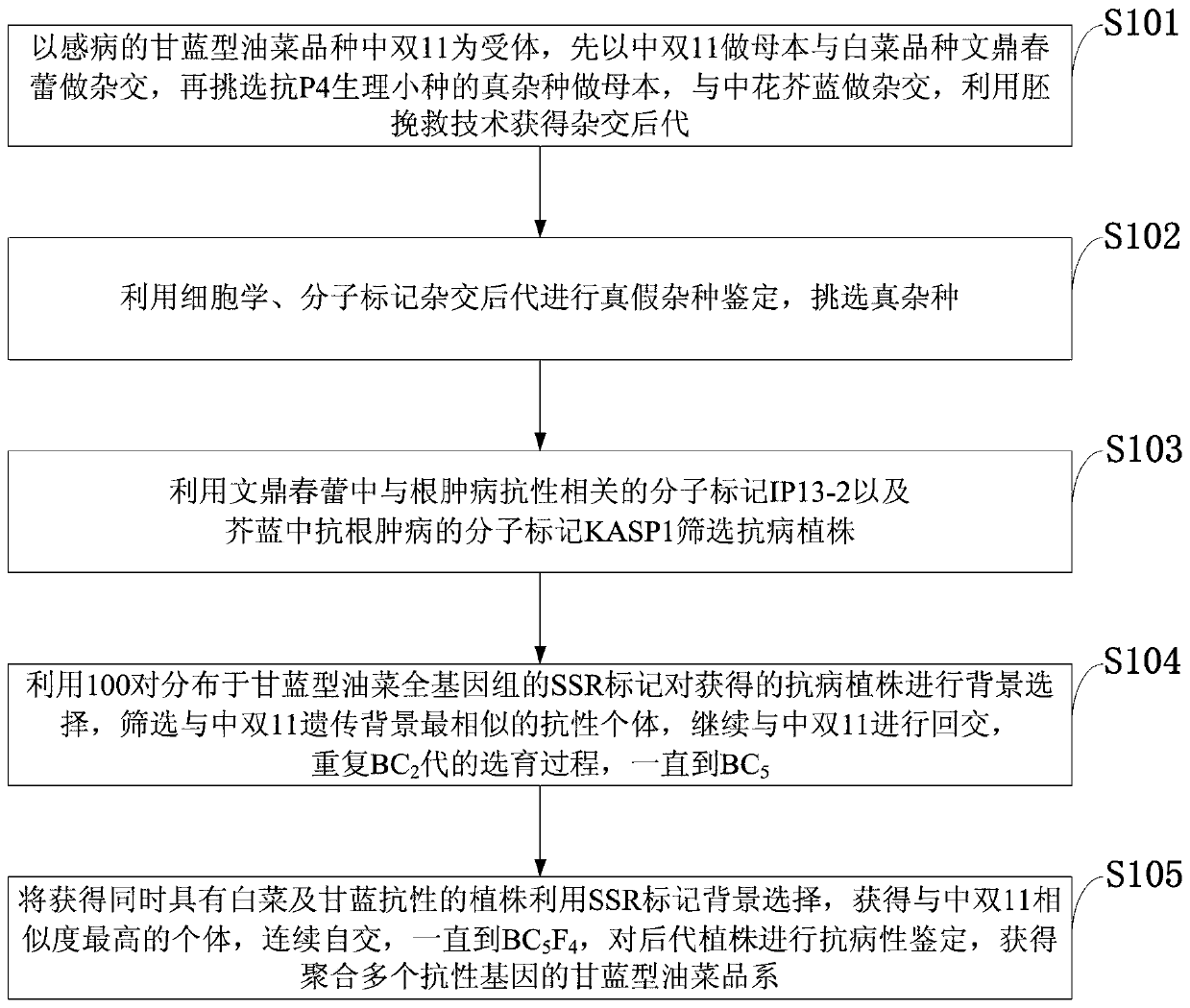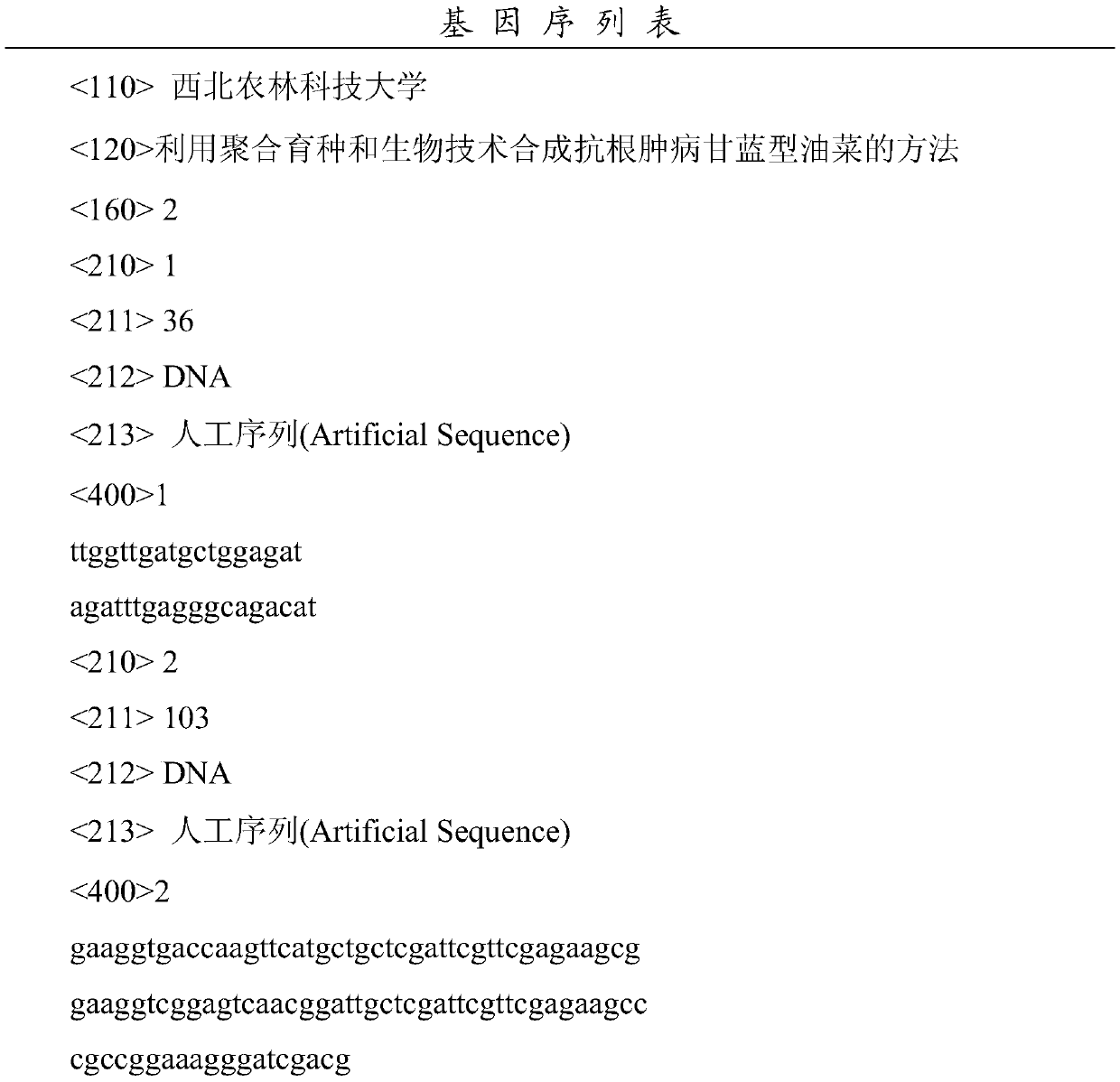Method for synthesizing clubroot resistant brassica napus through pyramid breeding and biotechnology
A technology for brassica napus and clubroot resistance, which is applied in the fields of botany equipment and methods, applications, plant gene improvement, etc., and can solve the problems of single source of resistance genes, heavy workload, and scarcity of clubroot-resistant germplasm resources, etc. problem, to speed up the process of cultivation and improve the effect of resistance
- Summary
- Abstract
- Description
- Claims
- Application Information
AI Technical Summary
Problems solved by technology
Method used
Image
Examples
Embodiment Construction
[0031]In order to make the object, technical solution and advantages of the present invention more clear, the present invention will be further described in detail below in conjunction with the examples. It should be understood that the specific embodiments described here are only used to explain the present invention, not to limit the present invention.
[0032] Aiming at the problems existing in the prior art, the present invention provides a method for synthesizing clubroot-resistant Brassica napus by means of aggregation breeding and biotechnology. The present invention will be described in detail below in conjunction with the accompanying drawings.
[0033] like figure 1 As shown, the method for synthesizing anti-clubbing Brassica napus provided by the embodiments of the present invention by utilizing polymerization breeding and biotechnology comprises the following steps:
[0034] S101: Using the susceptible Brassica napus variety Zhongshuang 11 as the receptor, Zhongsh...
PUM
 Login to View More
Login to View More Abstract
Description
Claims
Application Information
 Login to View More
Login to View More - R&D
- Intellectual Property
- Life Sciences
- Materials
- Tech Scout
- Unparalleled Data Quality
- Higher Quality Content
- 60% Fewer Hallucinations
Browse by: Latest US Patents, China's latest patents, Technical Efficacy Thesaurus, Application Domain, Technology Topic, Popular Technical Reports.
© 2025 PatSnap. All rights reserved.Legal|Privacy policy|Modern Slavery Act Transparency Statement|Sitemap|About US| Contact US: help@patsnap.com



